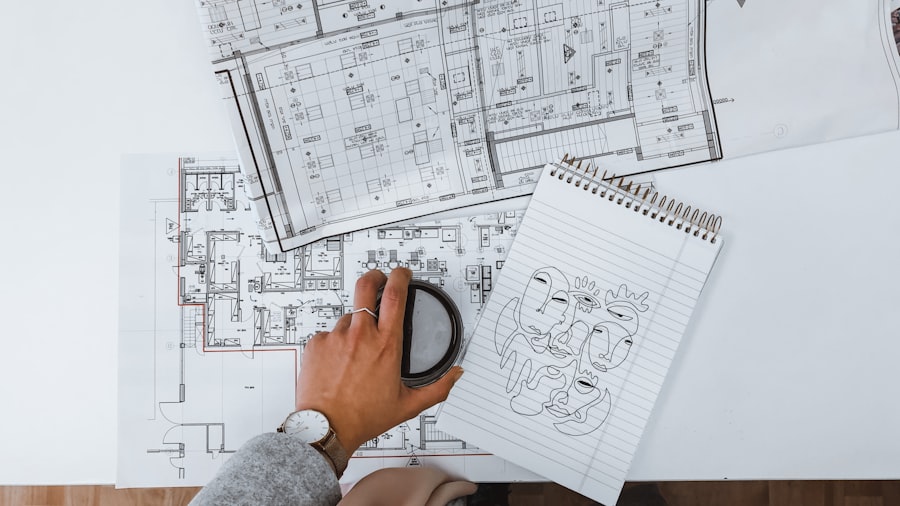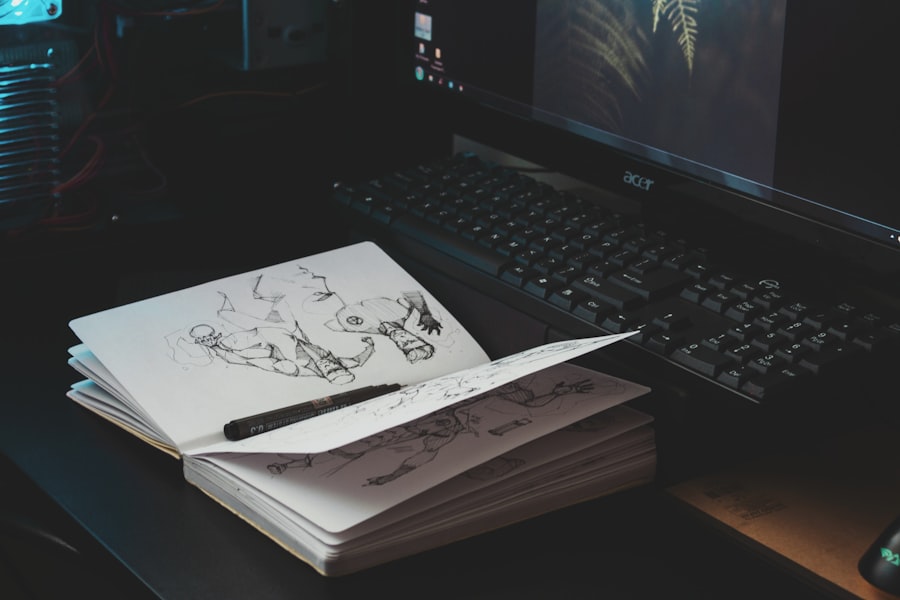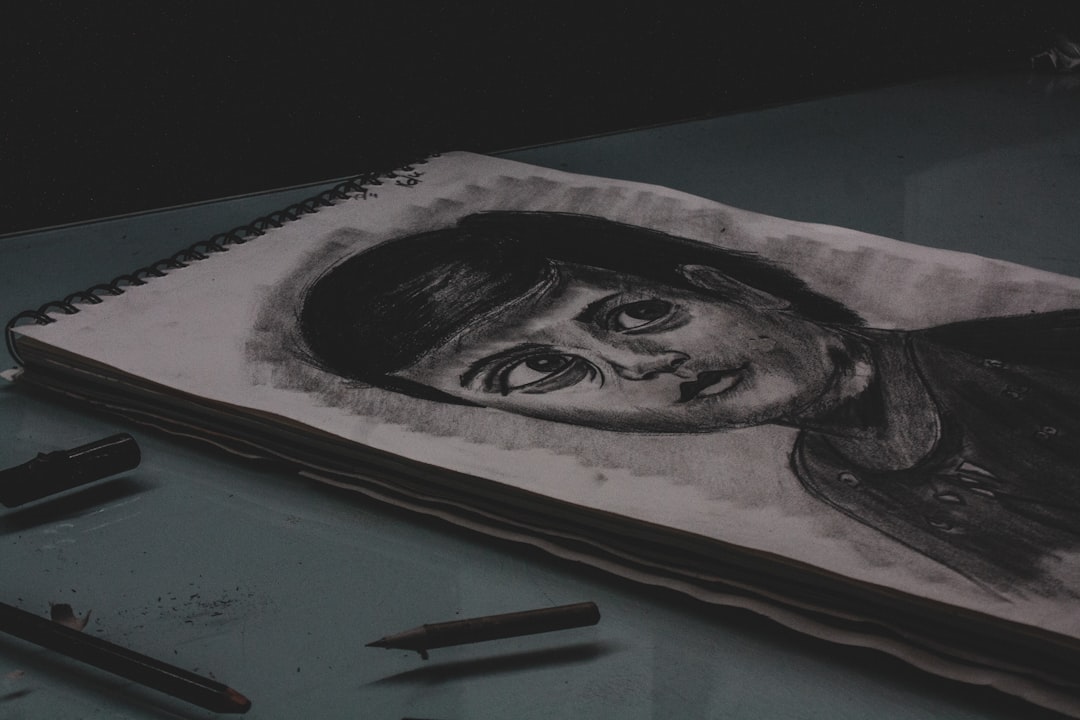As you delve into the world of illustration, you may find yourself increasingly surrounded by the influence of artificial intelligence (AI). This technology has made significant strides in recent years, transforming various creative fields, including illustration. AI tools are now capable of generating images, suggesting design elements, and even mimicking artistic styles.
This evolution raises intriguing questions about the future of illustration and the role of human artists in a landscape increasingly populated by algorithms and machine learning. The integration of AI into illustration is not merely a trend; it represents a fundamental shift in how art is created and consumed. As you explore this intersection of technology and creativity, you will discover both the opportunities and challenges that AI presents.
Understanding these dynamics is essential for anyone involved in the field, whether you are an aspiring illustrator or a seasoned professional.
Key Takeaways
- AI is revolutionizing the field of illustration, offering new tools and techniques for artists to explore.
- Traditional illustration jobs may be impacted by AI, but there are also new opportunities for collaboration and creativity.
- AI plays a significant role in the creative process, offering tools for generating ideas, enhancing productivity, and exploring new styles.
- The benefits of AI in illustration include increased efficiency, access to new creative tools, and the ability to experiment with different styles and techniques.
- Ethical considerations in AI illustration include issues of originality, ownership, and the potential for bias in AI-generated artwork.
The Impact of AI on Traditional Illustration Jobs
The rise of AI in illustration has sparked considerable debate about its impact on traditional jobs within the industry. As AI tools become more sophisticated, they can perform tasks that once required human skill and creativity. You may find that some illustrators are concerned about job security, fearing that their roles could be replaced by machines capable of producing high-quality images at a fraction of the time.
This anxiety is not unfounded; as AI continues to evolve, it may indeed disrupt established career paths in illustration. However, it is essential to recognize that while AI can automate certain aspects of the creative process, it does not necessarily eliminate the need for human illustrators. Instead, you might see a shift in the types of skills that are valued in the industry.
For instance, while AI can generate images based on specific parameters, it lacks the emotional depth and unique perspective that only a human artist can provide. As a result, traditional illustrators may find new opportunities to focus on conceptual development, storytelling, and other areas where human intuition and creativity shine.
The Role of AI in the Creative Process

As you navigate the creative process, you may find that AI can serve as a valuable tool rather than a replacement for your artistic abilities. Many illustrators are beginning to incorporate AI into their workflows, using it to enhance their creativity rather than stifle it. For example, AI can assist in generating initial concepts or providing inspiration when you encounter creative blocks.
By leveraging these tools, you can explore new ideas and push the boundaries of your artistic practice. Moreover, AI can streamline repetitive tasks, allowing you to focus on the more nuanced aspects of your work. Imagine spending less time on tedious details and more time refining your vision and experimenting with new techniques.
This shift can lead to a more fulfilling creative experience, enabling you to produce work that resonates with your audience on a deeper level. Embracing AI as a collaborator rather than a competitor can open up exciting possibilities for your artistic journey.
The Benefits of AI in Illustration
| Benefits of AI in Illustration | Metrics |
|---|---|
| Time-saving | Reduction in illustration creation time by 50% |
| Consistency | Increased consistency in style and quality |
| Cost-effective | Lower production costs by 30% |
| Efficiency | Improved workflow and faster revisions |
| Creative possibilities | Exploration of new design options and techniques |
The benefits of incorporating AI into illustration are manifold. One significant advantage is the increased efficiency that these tools offer. As you work on projects with tight deadlines, AI can help you generate ideas quickly or automate certain processes, allowing you to meet client demands without sacrificing quality.
This efficiency can be particularly beneficial in commercial illustration, where speed and adaptability are often paramount. Additionally, AI can enhance your creative capabilities by providing access to vast libraries of styles and techniques. With just a few clicks, you can explore different artistic approaches that may inspire your work or help you develop your unique style.
This democratization of artistic resources means that even emerging illustrators can experiment with diverse influences without extensive training or experience. By harnessing the power of AI, you can elevate your artistry and expand your creative horizons.
The Ethical Considerations of AI in Illustration
As you embrace the potential of AI in illustration, it is crucial to consider the ethical implications that accompany this technology. One pressing concern is the issue of copyright and ownership. When an AI generates an image based on existing works or styles, questions arise about who holds the rights to that creation.
As an illustrator, you may find yourself navigating a complex landscape where originality and attribution become increasingly blurred. Moreover, there is the risk of perpetuating biases present in the data used to train AI systems.
As you engage with AI tools, it is essential to remain vigilant about these ethical considerations and advocate for practices that promote inclusivity and respect for artistic integrity.
The Future of Illustration Jobs in the Age of AI

Looking ahead, the future of illustration jobs in an age dominated by AI is likely to be multifaceted. While some traditional roles may diminish due to automation, new opportunities will emerge as the industry adapts to technological advancements. You might find that demand for illustrators who can effectively collaborate with AI will increase, as clients seek professionals who can harness these tools creatively.
Furthermore, as industries continue to evolve and diversify, new niches within illustration will likely arise. For instance, areas such as virtual reality (VR) and augmented reality (AR) are gaining traction, requiring illustrators who can create immersive experiences that blend art with technology. By staying informed about industry trends and continuously developing your skills, you can position yourself for success in this dynamic landscape.
How Illustrators Can Adapt to the Rise of AI
To thrive in an era where AI plays an increasingly prominent role in illustration, you must be willing to adapt and evolve your skill set. Embracing lifelong learning will be essential as new tools and technologies emerge. Consider exploring online courses or workshops focused on AI applications in art and design to enhance your understanding of how these tools can complement your work.
Additionally, cultivating a strong personal brand will become increasingly important as competition grows within the industry. By showcasing your unique style and perspective, you can differentiate yourself from both human and AI-generated content. Engaging with your audience through social media platforms or personal websites will help you build a loyal following that appreciates your artistry beyond what machines can replicate.
The Potential for Collaboration Between AI and Human Illustrators
The relationship between AI and human illustrators need not be adversarial; instead, it holds immense potential for collaboration. As you experiment with AI tools, consider how they can enhance your creative process rather than replace it. For instance, using AI-generated sketches as a foundation for your work can spark new ideas and lead to innovative outcomes that blend human intuition with machine efficiency.
Moreover, collaborative projects between human artists and AI systems could pave the way for groundbreaking artistic expressions. Imagine creating a piece where an AI generates initial concepts based on your input, which you then refine and personalize to create a unique final product. This synergy between human creativity and technological innovation could redefine what it means to be an illustrator in the 21st century.
The Limitations of AI in Illustration
Despite its many advantages, it is essential to acknowledge the limitations of AI in illustration. While these tools can generate impressive visuals based on algorithms and data patterns, they lack true understanding and emotional depth. As an illustrator, you bring a unique perspective shaped by your experiences, emotions, and cultural context—qualities that machines cannot replicate.
Furthermore, AI-generated art often relies heavily on existing styles and trends rather than fostering genuine innovation. While it can mimic techniques effectively, it may struggle to produce truly original concepts that challenge conventions or push boundaries. As you navigate this landscape, remember that your creativity remains invaluable; it is your ability to think critically and innovate that sets you apart from any algorithm.
The Importance of Creativity and Originality in the Age of AI
In an age where AI-generated content is becoming increasingly prevalent, the importance of creativity and originality cannot be overstated. As an illustrator, your unique voice and perspective are what make your work resonate with audiences on a personal level. While AI can assist in generating ideas or refining techniques, it cannot replace the authenticity that comes from human experience.
As you continue to develop your artistic practice, prioritize cultivating your creativity and exploring new avenues for self-expression. Engage with diverse influences—whether through travel, literature, or collaboration with other artists—to enrich your perspective and inspire fresh ideas. By embracing your individuality and pushing the boundaries of your creativity, you can carve out a distinctive space for yourself in an evolving artistic landscape.
Embracing the Evolution of Illustration with AI
As you reflect on the evolving relationship between illustration and artificial intelligence, it becomes clear that this technological advancement presents both challenges and opportunities. While concerns about job security and ethical implications are valid, embracing AI as a tool for enhancement rather than replacement can lead to exciting new possibilities for creativity. By adapting to this changing landscape—continuously learning new skills, fostering collaboration between human artists and machines, and prioritizing originality—you can thrive as an illustrator in the age of AI.
Ultimately, embracing this evolution will not only enrich your artistic practice but also contribute to a vibrant future for illustration as a whole. As you navigate this journey, remember that your creativity remains at the heart of what makes art meaningful—an irreplaceable quality that no machine can replicate.
In recent years, the rise of artificial intelligence has sparked a significant debate about its impact on various creative industries, including illustration. Many artists are concerned about the potential for AI to take over jobs traditionally held by human illustrators. This concern is echoed in discussions across various platforms, including an insightful article on the topic. For a deeper understanding of how AI is influencing the job market for illustrators and the broader implications for the creative industry, you can read more in this related article. This piece explores the balance between technological advancement and the preservation of human creativity, offering a comprehensive view of the current landscape.
FAQs
What is AI?
AI, or artificial intelligence, refers to the simulation of human intelligence in machines that are programmed to think and act like humans. This includes tasks such as learning, problem-solving, and decision-making.
What are illustration jobs?
Illustration jobs involve creating visual representations of ideas, concepts, or stories. Illustrators use various mediums such as drawing, painting, and digital tools to create their artwork.
Is AI taking illustration jobs?
AI is beginning to impact the illustration industry by offering tools and software that can generate illustrations and artwork. While AI is not replacing illustrators entirely, it is changing the landscape of the industry and how illustrators work.
How is AI impacting illustration jobs?
AI is impacting illustration jobs by offering tools and software that can generate artwork and illustrations. This can streamline the illustration process and provide new creative possibilities for illustrators.
Are illustrators at risk of losing their jobs to AI?
While AI is changing the illustration industry, illustrators are not at immediate risk of losing their jobs. AI tools can assist illustrators in their work, but human creativity and artistic expression are still highly valued in the industry.
What skills are important for illustrators to remain competitive in the age of AI?
To remain competitive in the age of AI, illustrators should focus on honing their artistic skills, creativity, and ability to tell compelling visual stories. Additionally, staying updated on AI tools and technology can also be beneficial for illustrators.
